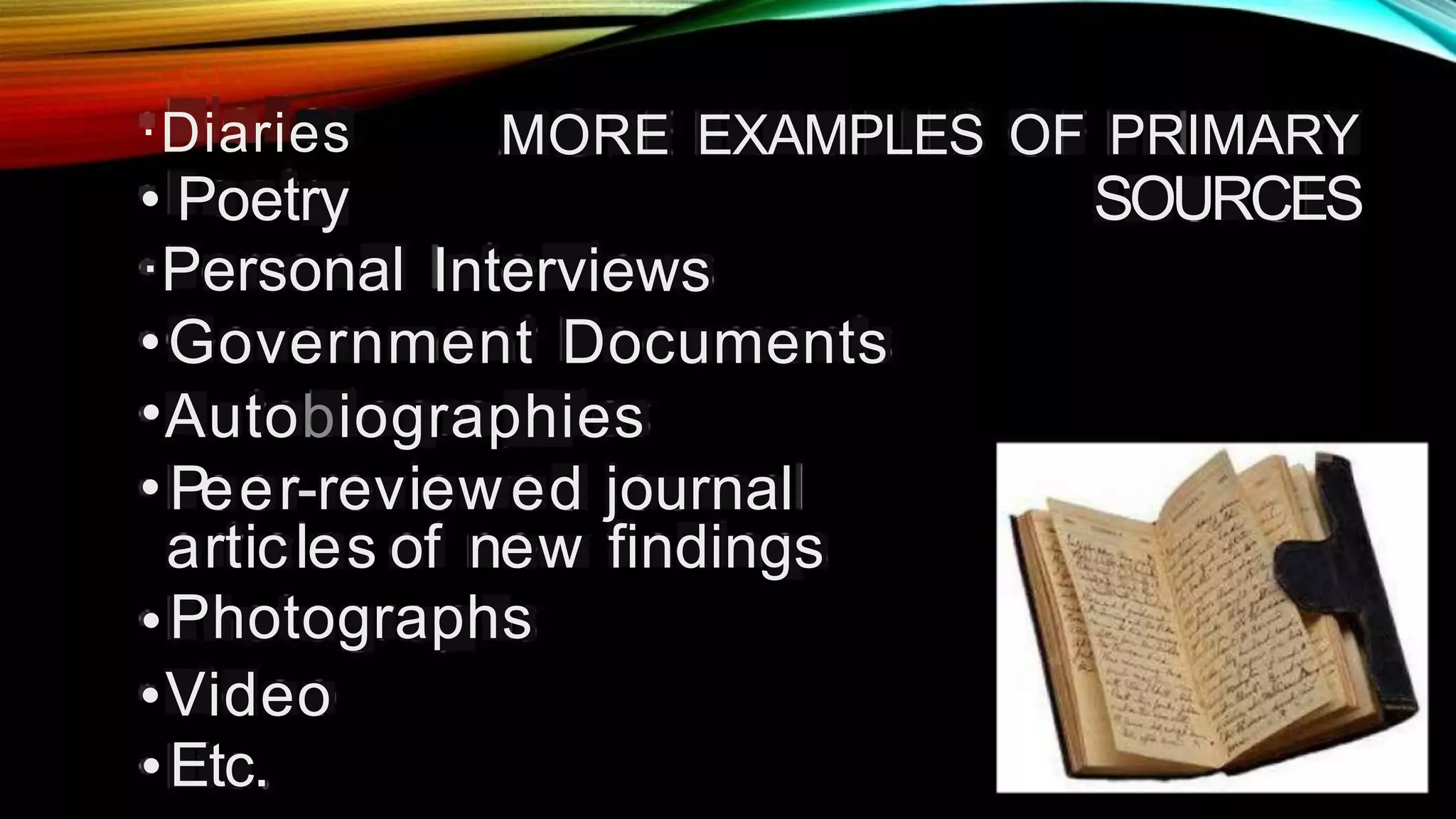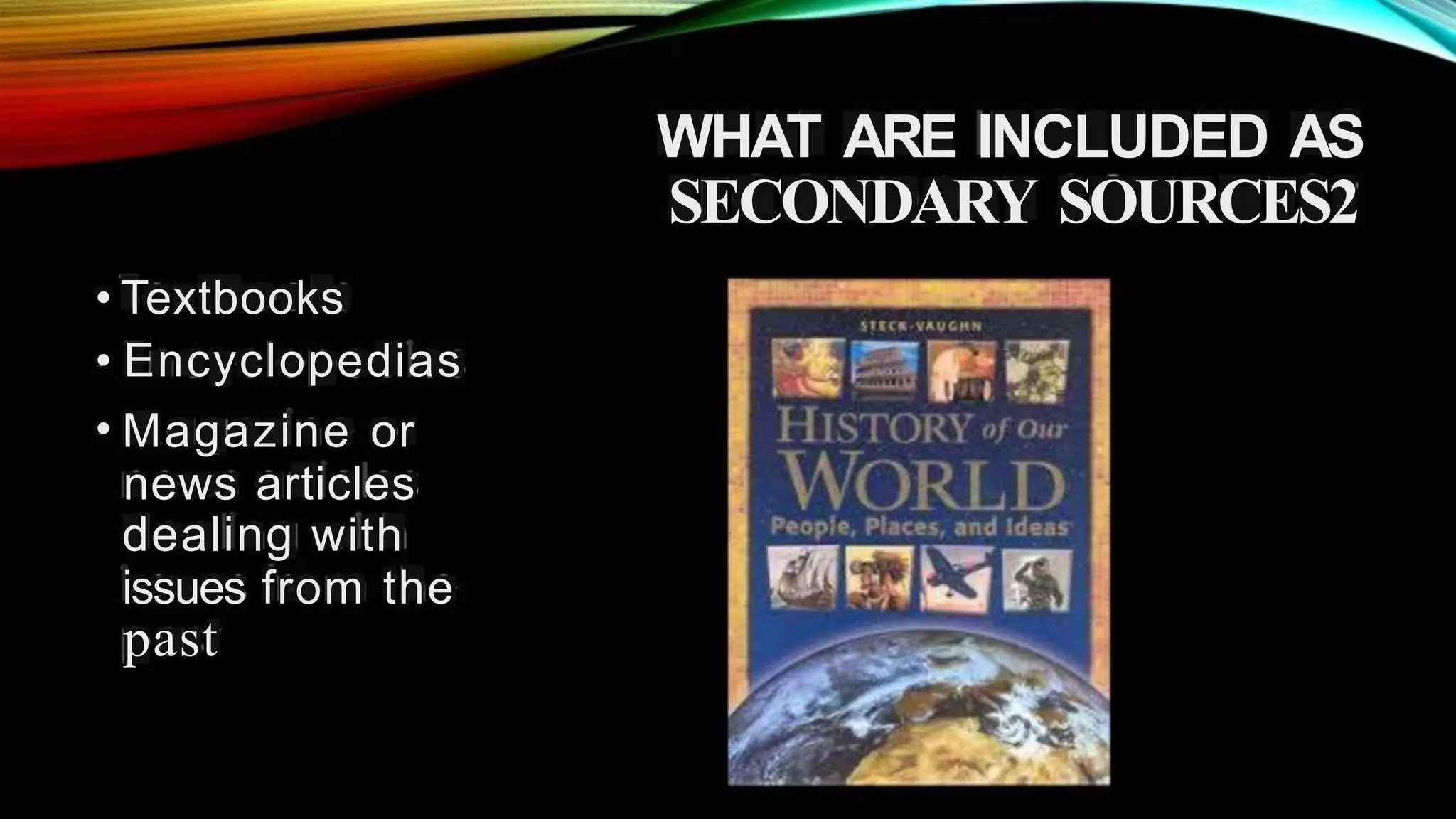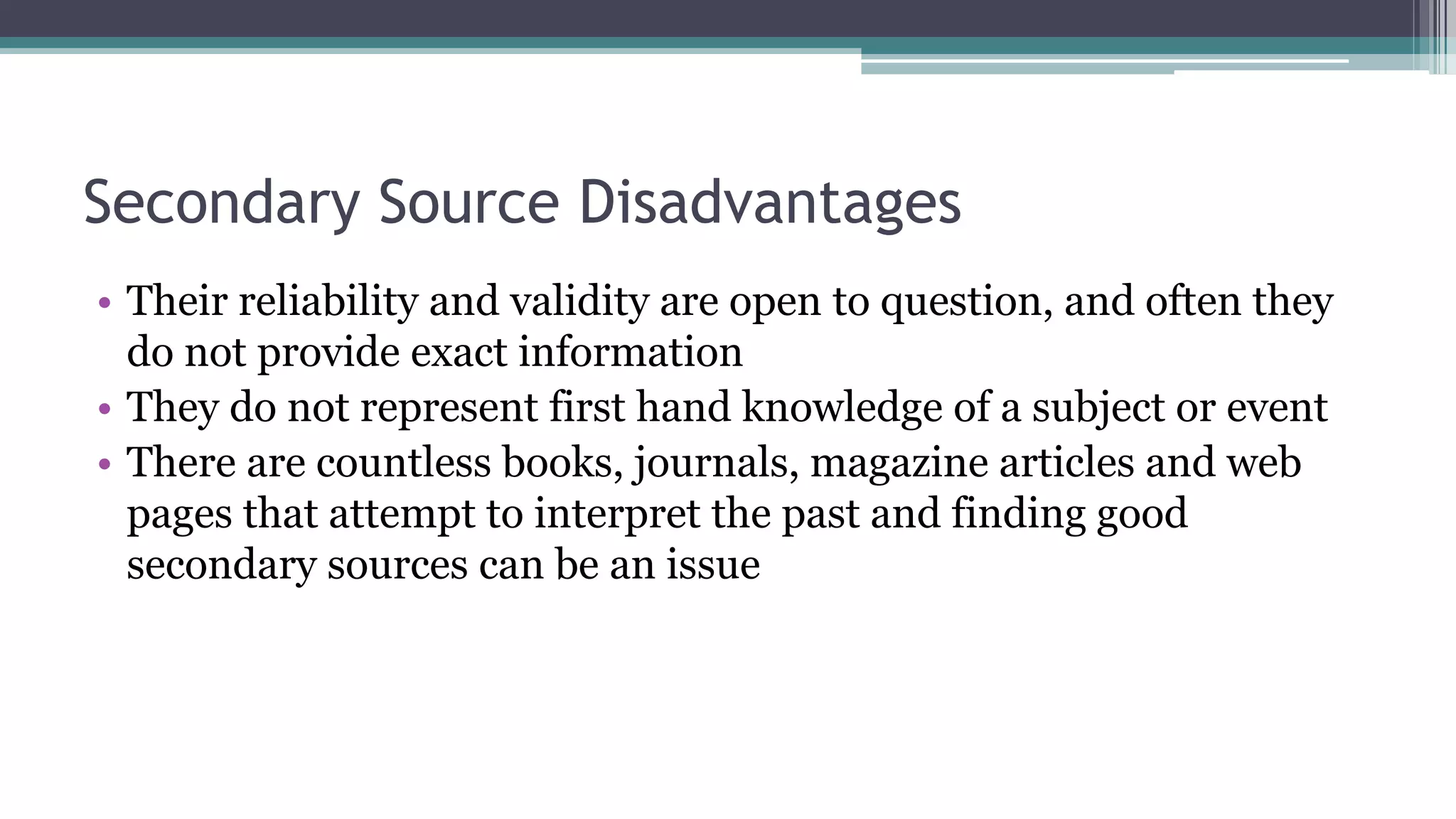History is the study of past events through records and accounts of those events. Primary sources are first-hand accounts created during the time under study, like diaries, letters, artifacts, and oral histories. Secondary sources interpret and analyze primary sources and are written after the fact, including textbooks, biographies, and news articles. Both primary and secondary sources are useful for learning about history, with primary sources providing direct insights and secondary sources providing context and analysis to help understand events.











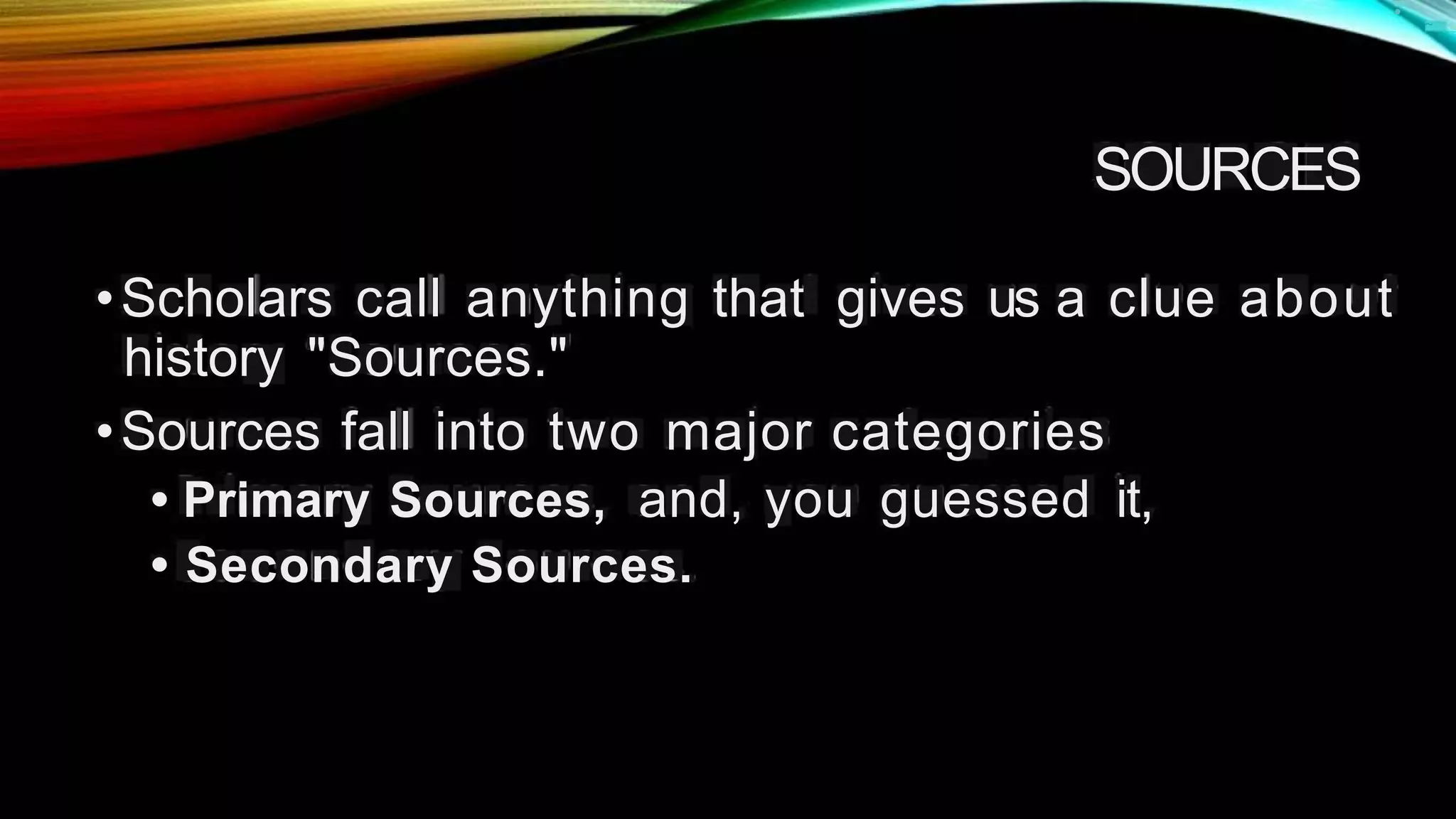




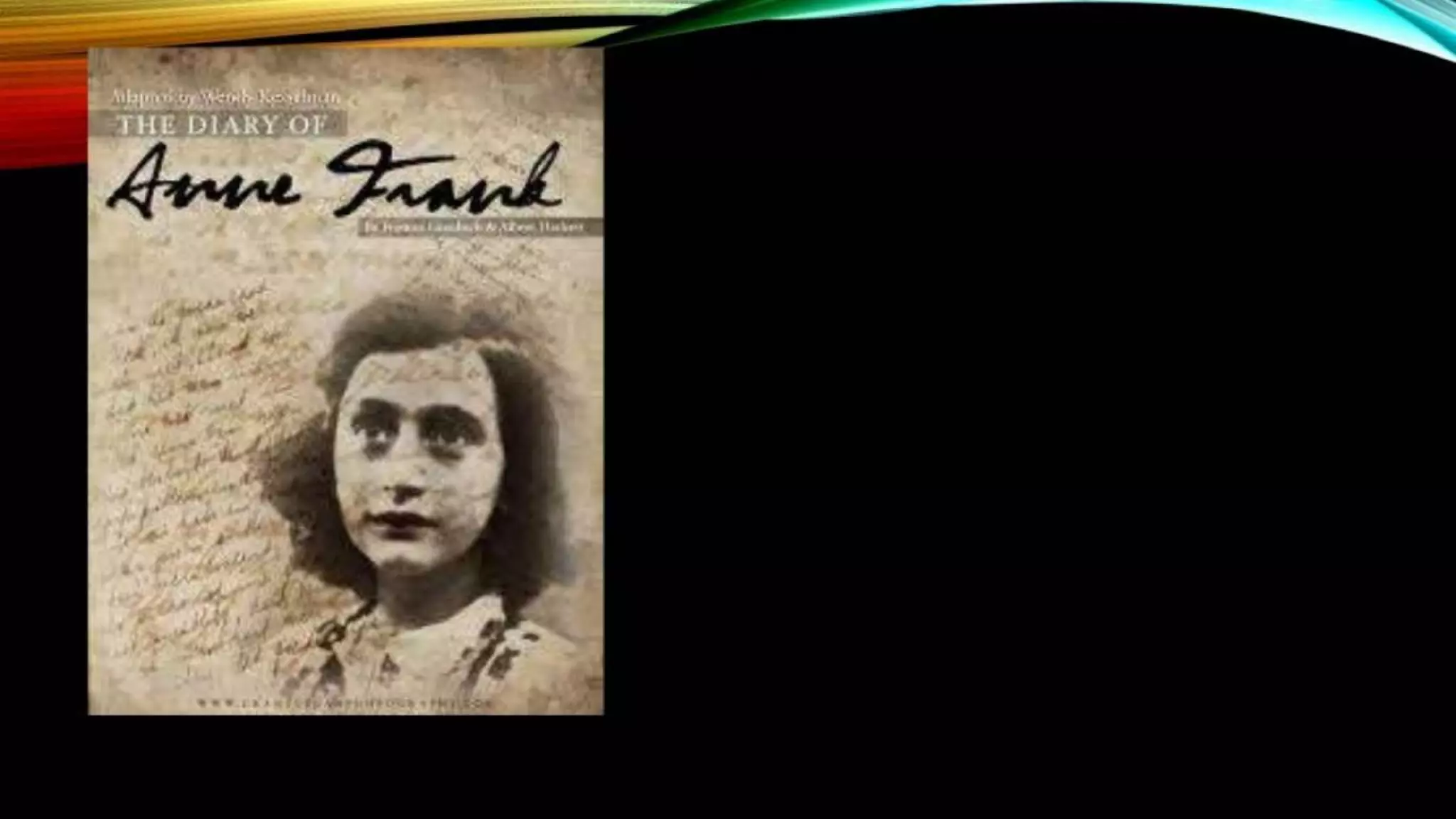
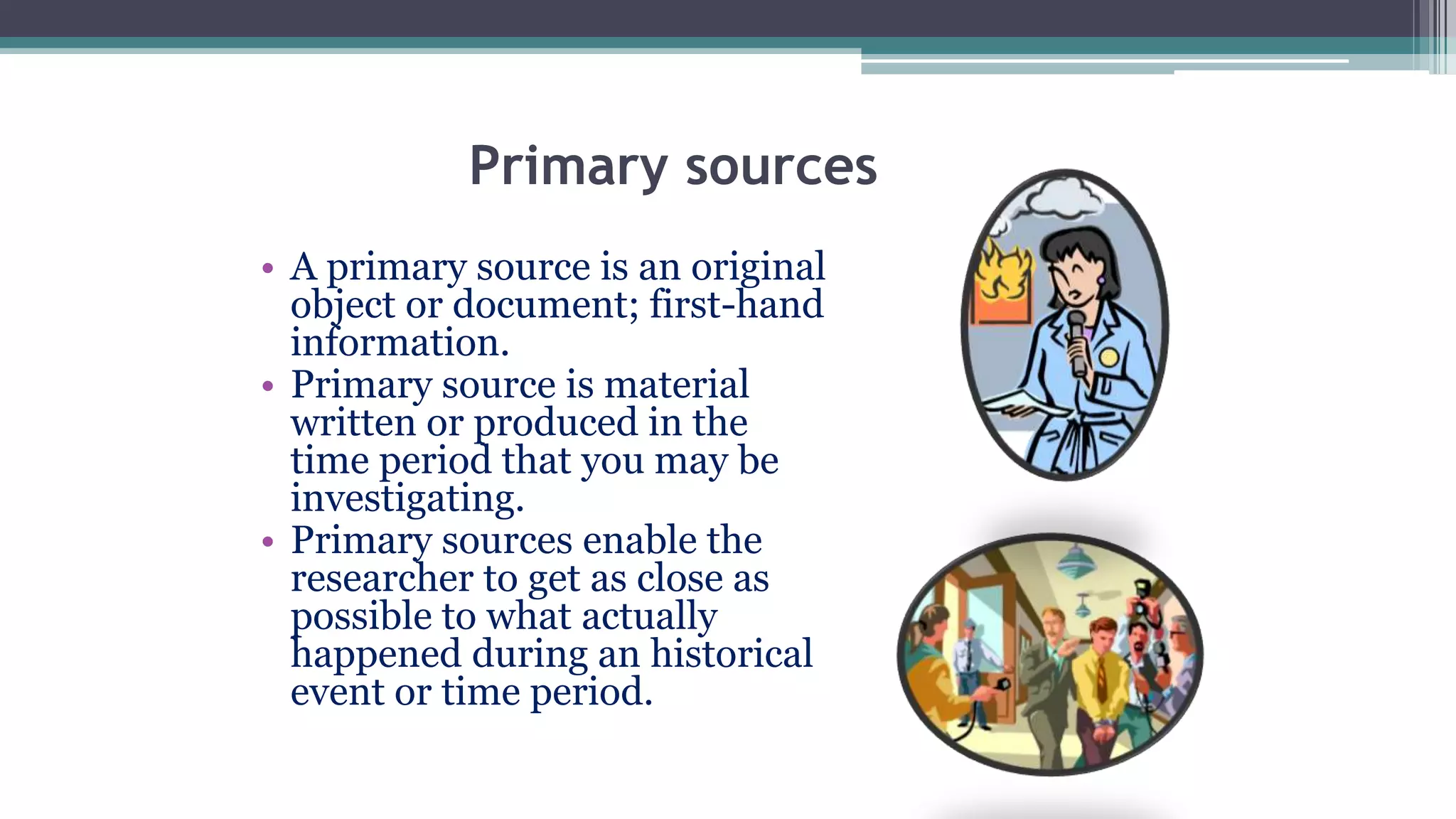




![----
- ---
-
0RID MA+•
PRIMARY
4i1
SOURCES
WON
' D E R)
"
ON
s
W
«
r DEi Rn 0f]
7Iie.
I.To· -BE~Oto.·~onh('.affl,
d&el•
Ji:
Shi;haziee:tans, otfdythe6th
t f, Ma
y next, ar eyFe
rry.s a choice
cargo oi a
b
o t 23
5
0 fine h
rak
l y - :
NEGROES,'
jat ar i ved from. rhe
W i o d r d & Rice Coaft.
---The utrot care his
MARRIED.
the 'st inst. on hoar II. B.M.' Ship
On
Collingwood, by the Rev. Nrn. PnocTon,
chaplain of that sh
i p, 'I'm
o s L xns , a
Br itish subj ect, to M r daughter of J Mr s
Fr, also a British subject, all residing on
the se islands,
already been taken, ana!ske
fhti be continued, to keep themtree from
cik tea'daager of brirginfectedth the
SMALL-POX,noboathaving beenon
board, and all other communication
with
People from Car'z-Town prevented.
Au~ti, Laurens, & App'ciy.
• • F
e! @ r e e f t e A
&
o
w
e Nitr
e »tr hi rte
•Newsprint
5MALL.-~X i n tiirsrn C o s y ,](https://image.slidesharecdn.com/history-221103003435-e396a214/75/history-pptx-23-2048.jpg)
